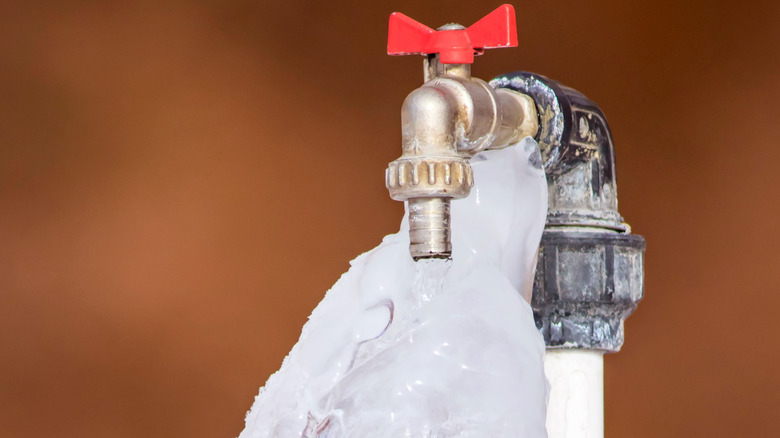Avoiding Frozen Pipes: Effective Strategies for Winter
Avoiding Frozen Pipes: Effective Strategies for Winter
Blog Article
Listed here further down you can locate a good deal of outstanding ideas regarding How to prepare your home plumbing for winter weather.

Winter can damage your pipes, especially by freezing pipes. Below's just how to prevent it from occurring and what to do if it does.
Intro
As temperatures decline, the danger of icy pipes increases, possibly leading to expensive fixings and water damages. Recognizing how to avoid frozen pipelines is vital for house owners in cold environments.
Avoidance Tips
Shielding at risk pipelines
Cover pipes in insulation sleeves or make use of heat tape to secure them from freezing temperature levels. Focus on pipes in unheated or exterior locations of the home.
Heating strategies
Keep interior areas adequately heated up, specifically locations with pipes. Open up cupboard doors to enable warm air to distribute around pipelines under sinks.
How to identify icy pipelines
Look for reduced water flow from taps, unusual smells or sounds from pipes, and visible frost on revealed pipes.
Long-Term Solutions
Structural changes
Consider rerouting pipes away from exterior wall surfaces or unheated locations. Include added insulation to attic rooms, cellars, and crawl spaces.
Upgrading insulation
Purchase high-quality insulation for pipes, attics, and wall surfaces. Correct insulation helps preserve consistent temperatures and minimizes the risk of icy pipes.
Shielding Outside Plumbing
Yard tubes and outside faucets
Detach and drain pipes garden pipes before wintertime. Set up frost-proof faucets or cover outside taps with protected caps.
Understanding Icy Pipelines
What causes pipelines to freeze?
Pipelines freeze when exposed to temperatures listed below 32 ° F (0 ° C) for extended durations. As water inside the pipelines freezes, it expands, putting pressure on the pipe wall surfaces and potentially triggering them to break.
Dangers and problems
Icy pipes can result in water supply interruptions, home damage, and pricey repair work. Ruptured pipelines can flood homes and trigger comprehensive architectural damages.
Indications of Frozen Pipes
Determining frozen pipes early can prevent them from rupturing.
What to Do If Your Pipelines Freeze
Immediate activities to take
If you suspect icy pipelines, keep taps open up to alleviate stress as the ice thaws. Make use of a hairdryer or towels taken in warm water to thaw pipes slowly.
Final thought
Stopping frozen pipes calls for aggressive procedures and quick responses. By recognizing the causes, signs, and safety nets, property owners can shield their plumbing throughout cold weather.
5 Ways to Prevent Frozen Pipes
Drain Outdoor Faucets and Disconnect Hoses
First, close the shut-off valve that controls the flow of water in the pipe to your outdoor faucet. Then, head outside to disconnect and drain your hose and open the outdoor faucet to allow the water to completely drain out of the line. Turn off the faucet when done. Finally, head back to the shut-off valve and drain the remaining water inside the pipe into a bucket or container. Additionally, if you have a home irrigation system, you should consider hiring an expert to clear the system of water each year.
Insulate Pipes
One of the best and most cost-effective methods for preventing frozen water pipes is to wrap your pipes with insulation. This is especially important for areas in your home that aren’t exposed to heat, such as an attic. We suggest using foam sleeves, which can typically be found at your local hardware store.
Keep Heat Running at 65
Your pipes are located inside your walls, and the temperature there is much colder than the rest of the house. To prevent your pipes from freezing, The Insurance Information Institute suggests that you keep your home heated to at least 65 degrees, even when traveling. You may want to invest in smart devices that can keep an eye on the temperature in your home while you’re away.
Leave Water Dripping
Moving water — even a small trickle — can prevent ice from forming inside your pipes. When freezing temps are imminent, start a drip of water from all faucets that serve exposed pipes. Leaving a few faucets running will also help relieve pressure inside the pipes and help prevent a rupture if the water inside freezes.
Open Cupboard Doors
Warm your kitchen and bathroom pipes by opening cupboards and vanities. You should also leave your interior doors ajar to help warm air circulate evenly throughout your home.

Do you enjoy more info about 6 Ways to Prevent Frozen Pipes? Make a review down below. We'd be delighted to see your suggestions about this page. We hope to see you back again soon. Are you aware of another person who is fascinated by Preventing and dealing with frozen pipes? Why not promote it. We recognize the value of your readership.
About This Report this page